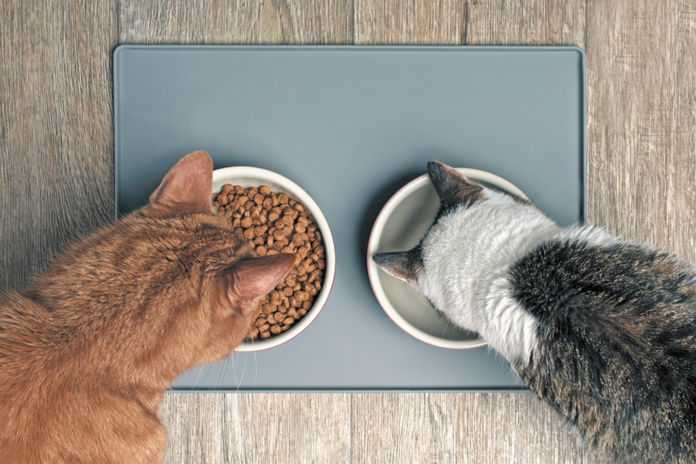You correctly choose a food from a reputable company with a label that carries a statement from the Association of American Feed Control Officials (AAFCO), which indicates that the contents are right for your cat’s stage of life. But do you have a healthy and safe way to store and serve the food you give your cat? Take this quiz and find out.
It’s best to store dry kibble
a. In the bag it came in.
b. In an airtight plastic container.
c. In its original bag that you then put in a plastic container.
c. A lot of cat owners pour the food from the bag into a plastic container for easy storage. They assume an airtight container keeps the contents fresh. But a lot of manufacturers put significant research into their packaging, in part by testing shelf life. That helps reduce the rate at which nutrients in the food break down and also cuts down on the risk for contamination from such foreign invaders as insects and dust.
Even safer is storing the bag and its contents in an airtight container. You can buy a large plastic container if the bags of food you purchase are large. That way you’re not depending solely on a clip or tape to keep the bag tightly closed after each feeding.
Note: Holding onto the bag also means you have the food’s UPC code, lot number, and “best by” date — important in case there’s a recall or you feel you need to report to the Food and Drug Administration that there’s something wrong with the food. (The easiest way to do that is through an online portal at safetyreporting.hhs.gov.)
2. Once opened and stored in the refrigerator, canned food should be thrown out after:
a. One day.
b. Two days.
c. Three days.
d. One week.
c. After three days, opened canned food starts to spoil, with potential nutrient degradation.
Tip: For more on proper storage of pet food, head to the Petfoodology blog of the Clinical Nutrition Service at the Tufts Cummings School (petfoodology.org) and type “The Scoop on Storing Pet Food” in the search bar.
3. True or false. The best way to serve a cat’s food is in his bowl, twice a day.
False. While most people feed their cats once or twice a day, a cat’s natural instincts are best served by giving him several small meals daily. In the wild, a cat’s natural behavior is to hunt prey of low calorie density throughout the day. They don’t “sit down to” large meals.
It’s also a good idea to put some of your cat’s food in food puzzles. That, too, speaks to your cat’s instinct to have to work for food rather than just have it put in front of him. It helps add activity that he would get to have “on the outside.” And that in turn will help him stay a little trimmer.
4. If you have more than one cat, they should be fed
a. Side by side.
b. Apart from each other.
b. Although it seems logical to feed all your cats with their bowls right next to each other, cats are solitary predators and solitary eaters. To avoid stress, they’d rather dine alone. The signs of stress are not always easy to recognize, but if your cat approaches her food with caution or eats while hunched or crouched, there’s a reasonable chance she’s feeling tense.
5. You should
a. Keep the food and water bowls next to each other.
b. Keep the food and water bowls away from each other.
b. Cats think of standing water as “stagnant” and therefore as potentially having contaminants that will taint their food. That’s why it’s better to keep the food and water bowls in different locations. To make drinking water even more enjoyable for your cat, buy a little cat fountain that runs on batteries or plugs in. He might appreciate running water better than still water.
6. True or false. For tidiness and efficiency, it’s okay to keep your cat’s food bowl and litter box near each other, say, in the laundry room or a back hallway.
False. Just like us, cats do not want to eat where they do their toileting.
7. True or false. Automatic feeders that dispense food at a pre-set time are reasonable for when you’ll be out of the house for many hours or are otherwise not available.
True. It’s always good for your cat to get attention from you and to have you around. But an automatic feeder might make a good daily option if, say, your cat wakes you at 5 am every morning for breakfast. If the feeder is set for that time, your cat will adjust to the fact that at that hour, food comes from a machine rather than from you.




